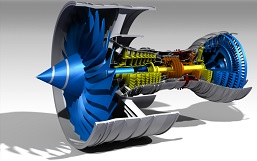
A 3D laser scanner is a device that scans objects and reproduces them digitally. It is a process which basically converts a physical object into an accurate digital model. With this technology any digitization can be obtained in minutes, reducing response times and significantly reducing the costs involved in performing the same process manually. There are many potential applications but the main ones are reverse engineering, reverse modeling and computerized verification of the models.
As this is a device that can replicate parts and components of any machine, the question here is whether the 3D laser scanner is simply a solution for the end user or whether it poses a risk to the original manufacturer and its parts’ sales?
Legal implications
There are legal aspects to be considered when reproducing parts and pieces of equipment. There is really a very thin line between replication based on reverse engineering and reverse modeling in terms of the deliberate copying of some parts and components of equipment.
Usually, the parts concerned are parts or pieces of equipment that are no longer manufactured because they have been discontinued or are obsolete. The affected equipment part is taken and a new reproduction is made, based on the geometry and the norms of design according to the current standards that apply. However, it is a very different situation when the reproduction is made by means of blueprints acquired under suspicious circumstances or with a lack of proper information. The latter is a crime, although reverse engineering is legal and has been practised for many years by OEMs.
New alternatives for end users
What is happening now is that new technologies are offering new alternatives to parts’ replicators which allow them to gain market share and to displace the OEM, because they can now provide the end user with a part or component that is dimensionally identical to the one from the manufacturer with the same or higher quality of manufacturing and materials and at a lower price.
This is because its costs are not as large and this method can provide a considerably faster response time. This means that the OEM is unable to compete, although there are always commercial strategies that can be established to control or mitigate these situations. The reality is that for OEMs the replicators have never represented such a major threat as they do today, so much so that in some cases they are considered as another competitor.
On the other hand the end users of equipment have found commercial allies in the replicators because these alternatives offer them excellent delivery times which allow them to quickly solve problematic situations that put their production schedules at risk.
Implications for OEMs
So this begs the question whether, in this current climate, the after-sales business of the original equipment manufacturer is finished. The answer to that question is no because what is happening today is that both OEMs and the replicators are competing on a par for much of the after-sales business and this is pushing OEMs to establish strategies that allow them to offer better trading conditions.
Many are sacrificing profit margins so that they can improve processes and embrace new technology which allows them to diversify their market. Some are changing techniques and procedures which allows them to have commercial allies which will support their manufacturing processes. Often these commercial allies end up being acquired by the companies concerned so that they do not represent a future commercial risk.
The truth is that new technologies are constantly coming to the market to facilitate the processes, designs and applications of engineering and equipment manufacturing. Many provide manufacturers and end users with exciting new possibilities but can also create problems. The only way to survive this situation is to constantly improve and innovate. The task or the challenge that we are all faced with in this environment, whether an OEM, a replicator or an engineer, is to constantly improve our processes in search of excellence. Continuous improvement is the only way forward.
Author:
Jhony J. Hernandez Q.






